The world’s attention today is on the COVID-19 pandemic, for which no vaccine has yet been found and treatment protocols are at best uncertain. Meanwhile, people around the world are suffering from illnesses that can easily be prevented or treated. For women, a deadly health risk is cervical cancer. Although preventable and treatable, cervical cancer causes premature deaths in low- and middle-income countries. This is the case in Peru, a leading emerging market strained by social inequality in assets, earnings, and education and common infrastructure gaps in water, sanitation, and health. Cervical cancer is the leading cause of death from cancers for Peruvian women in their prime reproductive and economic years.
Effective vaccines, screening and treatment protocols—and many deaths
Risk factors and systemic, cultural, and economic barriers to prevention, screening, and treatment for cervical cancer in Peru are well documented. Cervical cancer trends show association with low incomes and access to services: Poorer women and poorer districts exhibit higher rates of incidence and deaths from the disease. Many women diagnosed with cervical cancer are from indigenous groups, further compounding these inequities. Health system challenges range from unequal distribution of health services across the country to provider financial incentives that lead to delays in testing. Cultural barriers stem from fears of a cancer diagnosis, lack of knowledge, and mistrust of the healthcare system. The result is that half of the women diagnosed with cervical cancer in Peru will die from the disease.
We know that vaccinations against the human papilloma virus (HPV), a well-established cause of cervical cancer, and screening methods like HPV testing, are safe, efficacious, and cost-effective strategies to achieve the goal of eliminating cervical cancer by 2100. But big gaps in coverage exist all across the world. Gaps in vaccinations, which target nine to 13 year old girls, are just as likely in the United States as in Peru. Studies suggest that point-of-care and self-testing for the HPV virus and thermal ablation are more effective and accessible than conventional screening and treatment methods. Eliminating cervical cancer before 2100 will require low-cost and simple solutions that empower women. For women of reproductive age, this may be the only option.
The model: Community health powered by low-cost technologies
HOPE Peru Project is a social enterprise aiming to reduce HPV and cervical cancer by reaching women in their homes, workplaces, and communities. Based at the Universidad Peruana Cayetano Heredia and led by former health minister, Dr. Patty Garcia, HOPE partners with community health workers (CHWs) to deliver molecular HPV self-testing kits and health promotion on reproductive health. The goal is simple: save lives.
In March 2020, a team from Duke University’s Center for Global Women’s Health Technologies and Bass Connections program interviewed 20 CHWs to understand the community impact of HOPE in Pachacutec and Mi Peru, two peri-urban communities on the outskirts of Lima. Nearly 30 percent of the population live in poverty or extreme poverty, and many households lack basic services. Based on the interviews and prior work, technology-enabled community health opens up three pathways to advance women-inspired strategies for healthcare.
1. Empowering through awareness
Community leaders known as “HOPE ladies” encourage women to take charge of their own reproductive health. HOPE ladies who were interviewed report a lack of awareness about HPV and cervical cancer as a major problem in their communities. While they also identify cost and time as key barriers, they note these factors are not insurmountable when women are well-informed about the importance of cervical cancer screenings for their health and livelihood. HOPE ladies report that they and the women they serve are empowered to make informed decisions about their own health because of improved awareness and access to life-saving screening tests. In addition, the HOPE model has intergenerational effects, with several HOPE ladies involving their daughters in activities, promising growing impact and sustainability.
2. Investing in financial autonomy
The HOPE model uses microfinancing coupled with tiered pricing for the private sector for sustainability. HOPE ladies sell the self-testing kits for 10 PEN—about $3—and keep a small profit of 5 PEN. HOPE ladies report financial empowerment and autonomy with even this modest additional income. They invest the money in education for their children, better nutrition for the family, and better health care for themselves and other family members. Some HOPE ladies say that they have been able to spend the additional income on household expenditures or recreation activities as they choose. Evidence from around the world shows investments in education and women’s agency lead to more inclusive economies, and Peru is no exception.
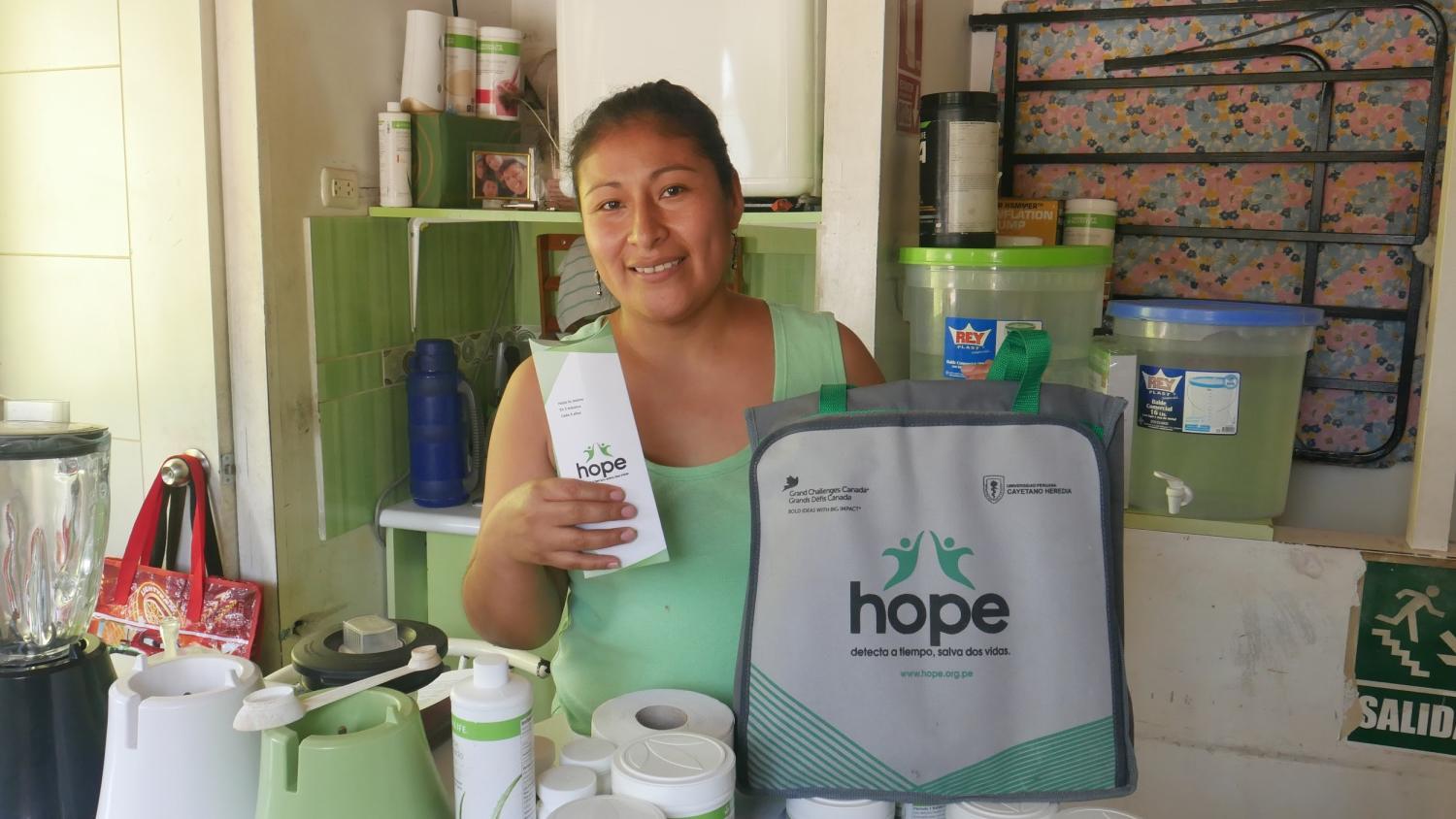
3. Plugging health system gaps that matter most
The HOPE model fills gaps in services needed for early detection and health promotion in medically underserved communities. There is just one hospital and 13 community health clinics serving half a million people—not an uncommon situation in developing countries. Health system barriers are known to result in low Pap smear coverage and high loss to follow up rates in Peru. The clinical care pathway for cervical cancer screening and treatment requires a woman to visit a health facility at least three times: for screening, a referral for a colposcopy with a trained gynecologist or oncologist, and a follow-up visit for treatment. While the public health system, Seguro Integral de Salud (SIS), and the social health insurance system, EsSalud, cover screening and treatment for cervical cancer, HOPE ladies reported waiting up to half a day to schedule an appointment and up to five months to receive a Pap smear result. Women often have to make multiple trips to the health facility to ask for results. With HOPE, the women self-test for HPV in the privacy of their homes, getting their results in person or by SMS message. They can use the extra time for work, child care, and family duties—and even get some rest.
From community health to comprehensive health care
HOPE does not replace the health system necessary for cervical cancer diagnosis and treatment, but the model presents an affordable, high-quality, and person-centered approach to expanding community-based early detection and health promotion. It’s a first step in the last mile to reaching women. As diagnostic innovations for cervical cancer are made, health models that shift care to the community and home will be important. During times of medical emergencies such as pandemics, insufficient personal protective equipment and medical personnel can easily compromise effective management of pressing needs such as reproductive health. Self-testing technologies allow providers to continue to reach people while keeping everyone safe.
The adoption of community-based approaches at a national scale will require additional measures, including alignment with health financing, provider buy-in, new organizational competencies, and community acceptability. But at least in Peru there is hope that someday soon, women will no longer die of preventable and treatable diseases.
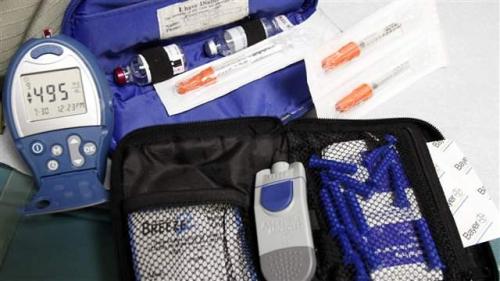
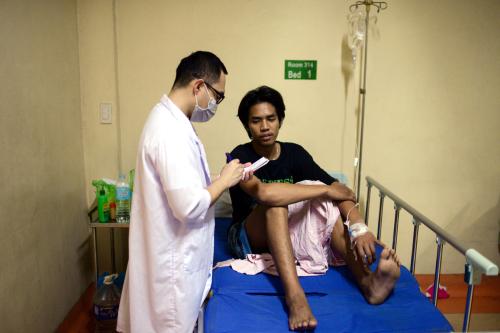
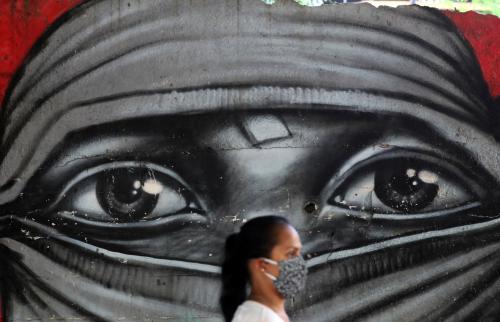






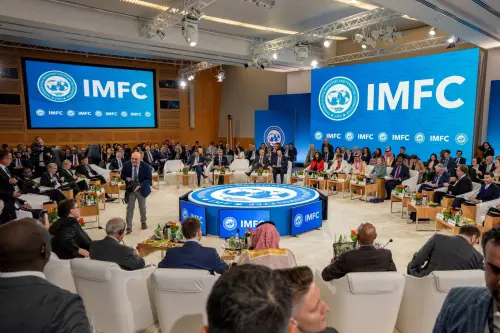
Commentary
New hope for fixing health system failures to prevent and treat cervical cancer
April 10, 2020